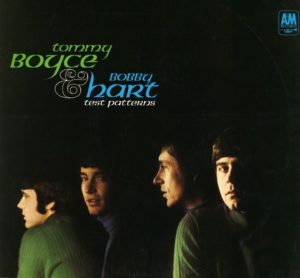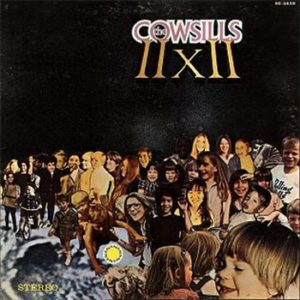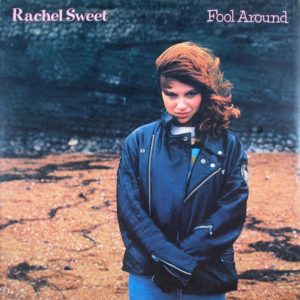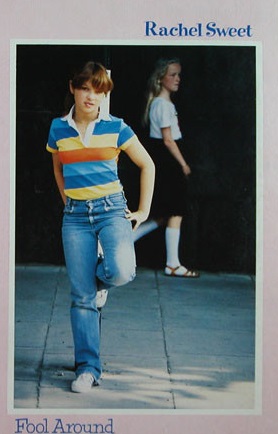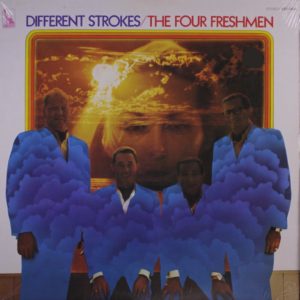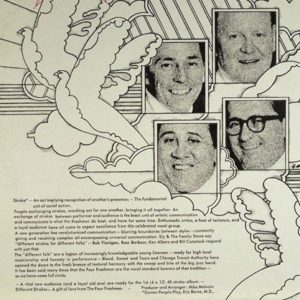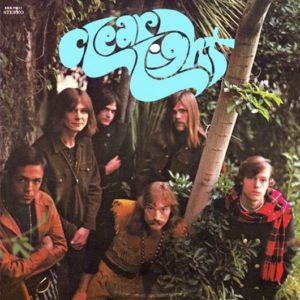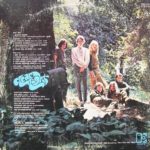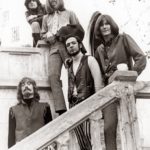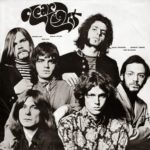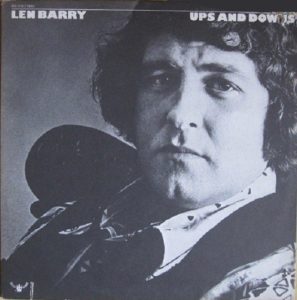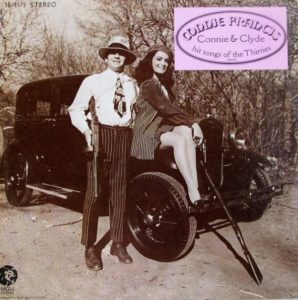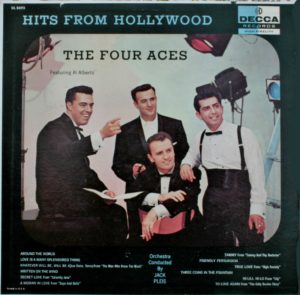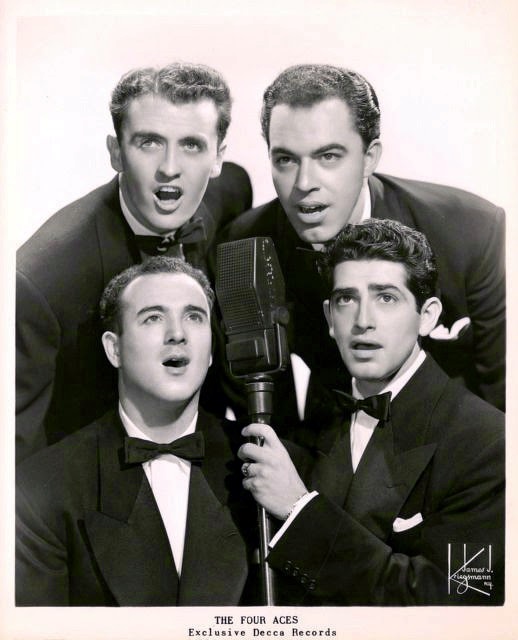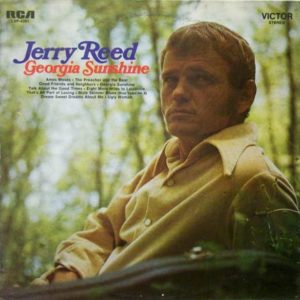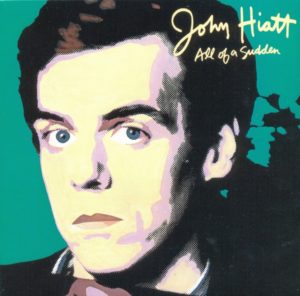Boyce & Hart are separate individuals who will always be named in the same breath.
Their careers stated independently and they did work along but all their great successes came with working with each other.
Like a lot of Los Angeles musicians in the 60s Boyce and Hart were from elsewhere (Hart was born in Charlottesville, Virginia and Boyce was born in Phoenix, Arizona, USA) but Los Angeles provided the giant melting pot coffee shop where people could meet, mix and collaborate. It was this that made the environment so productive and innovative.
It was never insular in its focus or its participants and music was forever being cross fertilised.
Wikipedia, “Sidney Thomas "Tommy" Boyce (September 29, 1939 – November 23, 1994) and Bobby Hart (born Robert Luke Harshman; February 18, 1939) were a prolific songwriting duo, best known for the songs they wrote for The Monkees … Hart's father was a church minister and he himself served in the Army after leaving high school. Upon discharge, he travelled to Los Angeles seeking a career as a singer. Boyce was separately pursuing a career as a singer. After being rejected numerous times, Boyce took his father's suggestion to write a song called "Be My Guest" for rock and roll star Fats Domino. He waited six hours at Domino's hotel room to present him with the demo, and got Domino to promise to listen to the song. The song hit #8 in the US and #11 in the UK, becoming Domino's biggest hit there in several years, and sold over a million copies. Boyce met Hart in 1959, and the following year played guitar on Hart's single "Girl in the Window", which flopped, but marked the first time he used the name Bobby Hart, since his manager shortened it to fit the label … Their partnership made a breakthrough with a song recorded by Chubby Checker, "Lazy Elsie Molly", in 1964. They went on to write hits for Jay & the Americans ("Come a Little Bit Closer"), Paul Revere and the Raiders ("(I'm Not Your) Steppin' Stone") and The Leaves ("Words"). The latter two songs provided the Monkees with hit B-sides in 1967. The duo also wrote the theme song of the daytime soap Days of Our Lives. At one point in this period, Hart also co-wrote "Hurt So Bad" for Little Anthony & the Imperials with Teddy Randazzo and his regular songwriting partner, Bobby Weinstein”. https://en.wikipedia.org/wiki/Boyce_and_Hart
Boyce & Hart were a west-coast equivalent to the east-coast Brill Building songwriting teams like Barry-Greenwich, Goffin-King or , even more so, Doc Pomus and Mort Shuman because their pop rocked a little harder .
Their material, perhaps wasn’t as meaningful or ambitious as the best of the Brill Building but it is well crafted and extremely melodic and they tapped into what was going on in California at the time. The deeply tragic east-coast mini operas of love and desolation were replaced by bright, happy sunshine-y pop tunes, heavy on Beach Boy vocal harmonies and designed to be heard on the radio down at the beach.
And that may sound simple but in a crowded market with talent everywhere this was no easy feat.
Despite the hits (or, perhaps, because of them) like their brill building counterparts Boyce & Hart didn’t get the respect of the music intelligentsia (if that isn’t an oxymoron). They weren’t cool and they were, perhaps, to business like.
But, music is a business.
Well, some of it.
A lot of it?
But, who cares?
I mean these guys wrote “(Theme from) The Monkees” for the Monkees TV show, as well as “Last Train to Clarksville,” “I’m Not Your Steppin’ Stone” and “I Wonder What She’s Doing Tonight” and “Come A Little Bit Closer”.
After writing hits for others they decided to try recording themselves.
This is that first album.
And, it may be a rush job to cash in on some of their songwriting success but they throw everything into it …
Pop, bubble gum, pop psych, flamenco, rock ‘n’ roll, blues, garage, folk rock, orchestral, vaudeville, Klezmer music (!)
I mean it’s not “Sgt Peppers” (actually, that is an album I rarely listen to) but its influences are a lot broader … perhaps like “The White Album”, though more so (okay, that is an album I listen to a bit) …. I’m not saying it is as good as either of those albums (define “good”)
It is sung well and it is ambitious within its self-imposed pop boundaries.
Importantly, you can tap your toes and hum along.
Boyce & Hart split up, both as songwriters and performers, at the end of the 1960s, although they later teamed up with ex-Monkees Micky Dolenz and Davy Jones to perform and record for a while in the mid-'70s as Dolenz, Jones, Boyce & Hart.
All songs written and produced by Tommy Boyce & Bobby Hart
Tracks (best in italics)
Side One
- Out & About – a great late 60s pop rock song. It should have been a bigger hit (though arguably it was, as another song, for the Monkees) https://ironleg.wordpress.com/2010/04/25/boyce-and-hart-out-and-about/
- I Should Be Going Home – more Monkees sounds. This in a slower more deliberate time. It may be filler but it is above average filler.
- In The Night – This one is more strident and sounds like something The Walker Brothers would be doing.
- My Little Chickadee – No direct links but a spiritual homage to W.C. Fields vaudeville roots (and his film of the same name co-starring Mae West from 1942). This stuff post the 1930s revival of the late 60s was not unusual. And, there seemed to be a lot of songs where someone tried the W.C. Fields voice … as they do here. Again, this is filler but quite pleasant.
- For Baby – very nice. Vaguely reminiscent of Donovan at his flower power folk rock / pop best.
Side Two
- Sometimes She's A Little Girl – The full Monkees and I don't think they could have done any better.
- Abe's Tune – a novelty tune with a 50s refrain.
- Shadows – quite a nice ballad …very late 60s with all the late 60s "thoughtful" lyrics.
- Girl, I'm Out To Get You – Klezmer music (the music of the Ashkenazi Jews of Eastern Europe but popular in the US with migrants and then revived during various folk booms) goes pop. It is certainly out there.
- Life – Sunday Night In Phoenix / Life In Hollywood / Sunrise Through The Meadow / What's It All About – blues influences abound as Boyce & Hart do the Blues Project or The Paul Butterfield Blues Band. If you didn't know it was them and you didn't associate them with the pop they do best and you like white blues then you wouldn't have a problem with this. It is convincing.
Singer per song:
- Out & About – Tommy & Bobby
- I Should Be Going Home – Tommy
- In The Night – Bobby
- My Little Chickadee – Tommy (guitar) & Bobby (piano)
- For Baby – Tommy (guitar) & Bobby (piano only)
- Sometimes She's A Little Girl – Tommy & Bobby
- Abe's Tune – Tommy & Bobby
- Shadows – Yommy
- Girl, I'm Out To Get You – Tommy
- Life – Bobby (piano)
And …
The album is all over the place in influences but Boyce & Hart's pop sensibility keeps it on track. It's not magnificent but it certainly is well above average … I'm keeping it.
Chart Action
US
Singles
1967 Out and About #39
1967 Sometimes She's a Little Girl #110
Album
1967 #200
England
nothing
Australia
Singles
1968 I Wonder What She's Been Doing #20
Album
unknown
Sounds
Out & About
from “I Dream of Jeannie” (1967) (with Phil Spector at the end)
https://www.youtube.com/watch?v=R5GoGClBvOg
mp3 attached
In The Night
https://www.youtube.com/watch?v=KPGfNbjXOpE
My Little Chickadee
https://www.youtube.com/watch?v=7Y4WOkmHA18’
Sometimes She's A Little Girl
https://www.youtube.com/watch?v=7xFLjYIyh-c
Abe's Tune
https://www.youtube.com/watch?v=dJWmUazGZdY
Shadows
https://www.youtube.com/watch?v=6Y_9z0LDnYs
Girl, I'm Out To Get You
from “I Dream of Jeannie” (1967)
https://www.youtube.com/watch?v=XzrznCVaivI
Life – Sunday Night In Phoenix / Life In Hollywood / Sunrise Through The Meadow / What's It All About
https://www.youtube.com/watch?v=DMPK2gBvptc
Others
https://www.youtube.com/watch?v=mfnlBXLHd08
https://www.youtube.com/watch?v=HdGPrkQfP2M
https://www.youtube.com/watch?v=HXMIEl8Yxow
from “Bewitched” TV show (1970)
https://www.youtube.com/watch?v=8hydnv1XSBA
from “The Flying Nun” TV show (1970)
https://www.youtube.com/watch?v=Vqe8MVcklCg
Review
https://www.allmusic.com/album/test-patterns-mw0000849807
http://grapher-music.blogspot.com.au/2013/12/tommy-boyce-bobby-hart-test-patterns.html
Bio
http://www.forgottenhits.com/the_music_of_tommy_boyce_and_bobby_hart
https://www.allmusic.com/artist/boyce-hart-mn0000095455/biography
http://articles.latimes.com/1994-11-26/news/mn-1559_1_tommy-boyce
Website
http://www.officialboyceandhart.com/
https://www.facebook.com/boyceandhart/
Trivia
- Credits: Arranged By (Strings & Horns) – Don McGinnis / Bass – Larry Taylor / Drums – Billy Lewis / Guitar – Gerry McGee, Louie Shelton, Wayne Irwin / Sounds (Bird Calls) – Frank Leper / Sounds (Riveting) – George Swile / Written By Boyce-Hart
- “The greatest chart success and recognition TOMMY BOYCE AND BOBBY HART ever received was for their work with THE MONKEES. In fact, not only were they hired as music producers of the new television series, they also recorded the original tracks for the pilot that THE MONKEES simply lip-synced along with! (TOMMY BOYCE has since stated that he and BOBBY were promised two of the actors' roles in the show … sort of the LENNON and McCARTNEY of the group … but that after the four parts had been cast without them, they were told that they could stay on as producers while a brand new television series was developed around their talents. The new series never materialized. BOBBY HART has said that if any such conversation ever took place, he wasn’t aware of it!!!) Once the pilot was sold, the BOYCE and HART vocals were removed and THE MONKEES' voices were added. BOYCE and HART DO, however, sing background on some of these tracks … most notably, one of today's tunes, STEPPIN' STONE!!!” http://www.forgottenhits.com/the_music_of_tommy_boyce_and_bobby_hart
- They became spokesmen for lowering the voting age to 18, even writing a song for the movement — “L.U.V. (Let Us Vote).” The 26th Amendment to the Constitution, lowering the voting age to 18, was ratified by the states in 1971.
- “Boyce was a serious Elvis fan and one night, he, Benton and Collas drove out to Elvis's alma mater, Humes High School. "He was goin' south on Manassas and he turned and drove up to the school and doggone if he didn't take that thing and drive straight up that walkway and up the steps," Benton said with a chuckle. "I was getting nervous, 'cause he'd had a toddy or two and the police frown on that." From The Commercial Appeal, Memphis TN Saturday Dec. 3, 1994 http://www.stagemom.com/djbh/remember.html

